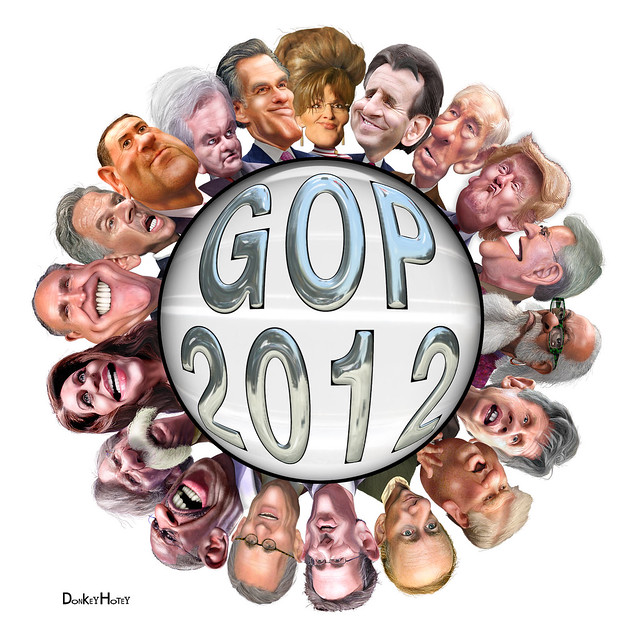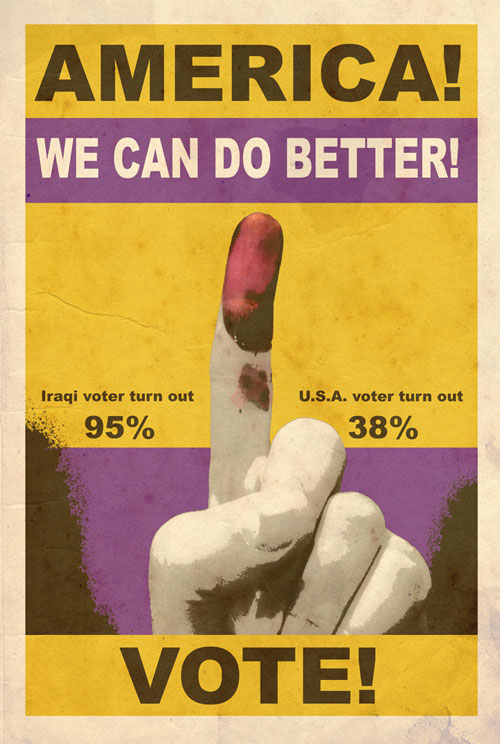
Yanina Manolova / AP
The soaring national debt is recorded on the National Debt Clock in New York. The national debt was $11,518,472,742,288 on Wednesday, according to the Treasury Department, but could actually be as high as $184,000, explained below.
![]()
WASHINGTON - The Founding Fathers left one legacy not celebrated on Independence Day but which affects us all. It's the national debt.
The country first got into debt to help pay for the Revolutionary War. Growing ever since, the debt stands today at a staggering $11.4 trillion — equivalent to about $37,000 for each and every American. And it's expanding by over $1 trillion a year.
The mountain of debt easily could become the next full-fledged economic crisis without firm action from Washington, economists of all stripes warn.
"Unless we demonstrate a strong commitment to fiscal sustainability in the longer term, we will have neither financial stability nor healthy economic growth," Federal Reserve Chairman Ben Bernanke recently told Congress.
Higher taxes, or reduced federal benefits and services — or a combination of both — may be the inevitable consequences.
The debt is complicating efforts by President Barack Obama and Congress to cope with the worst recession in decades as stimulus and bailout spending combine with lower tax revenues to widen the gap.
Interest payments on the debt alone cost $452 billion last year — the largest federal spending category after Medicare-Medicaid, Social Security and defense. It's quickly crowding out all other government spending. And the Treasury is finding it harder to find new lenders.
U.S. has been debt-free only once, in 1834-35
The United States went into the red the first time in 1790 when it assumed $75 million in the war debts of the Continental Congress.
Alexander Hamilton, the first treasury secretary, said, "A national debt, if not excessive, will be to us a national blessing."
Some blessing.
Since then, the nation has only been free of debt once, in 1834-1835.
The national debt has expanded during times of war and usually contracted in times of peace, while staying on a generally upward trajectory. Over the past several decades, it has climbed sharply — except for a respite from 1998 to 2000, when there were annual budget surpluses, reflecting in large part what turned out to be an overheated economy.
Middle East wars helped 'break' the debt clock
The debt soared with the wars in Iraq and Afghanistan and economic stimulus spending under President George W. Bush and now Obama. And although Obama inherited a large debt and economic problems from Bush, he has already quadrupled Bush’s debt over the next 10-years, after less than 6-months in office.
The odometer-style "debt clock" near Times Square — put in place in 1989 when the debt was a mere $2.7 trillion — ran out of numbers and had to be shut down when the debt surged past $10 trillion in 2008.
The clock has since been refurbished so higher numbers fit. There are several debt clocks on Web sites maintained by public interest groups that let you watch hundreds, thousands, millions zip by in a matter of seconds.
The debt gap is "something that keeps me awake at night," Obama says.
He pledged to cut the budget "deficit" roughly in half by the end of his first term. But "deficit" just means the difference between government receipts and spending in a single budget year.
This year's deficit is now estimated at about $1.85 trillion.
Deficits don't reflect holdover indebtedness from previous years. Some spending items — such as emergency appropriations bills and receipts in the Social Security program — aren't included, either, although they are part of the national debt.
The national debt is a broader, and more telling, way to look at the government's balance sheets than glancing at deficits.
U.S. is more than $11 trillion in debt
According to the Treasury Department, which updates the number "to the penny" every few days, the national debt was $11,518,472,742,288 on Wednesday.
The overall debt is now slightly over 80 percent of the annual output of the entire U.S. economy, as measured by the gross domestic product.
By historical standards, it's not proportionately as high as during World War II, when it briefly rose to 120 percent of GDP. But it's still a huge liability.
Also, the United States is not the only nation struggling under a huge national debt. Among major countries, Japan, Italy, India, France, Germany and Canada have comparable debts as percentages of their GDPs.
Where does the government borrow all this money from?
Treasury securities still seen as safe investments
The debt is largely financed by the sale of Treasury bonds and bills. Even today, amid global economic turmoil, those still are seen as one of the world's safest investments.
That's one of the rare upsides of U.S. government borrowing.
Treasury securities are suitable for individual investors and popular with other countries, especially China, Japan and the Persian Gulf oil exporters, the three top foreign holders of U.S. debt.
But as the U.S. spends trillions to stabilize the recession-wracked economy, helping to force down the value of the dollar, the securities become less attractive as investments. Some major foreign lenders are already paring back on their purchases of U.S. bonds and other securities.
And if major holders of U.S. debt were to flee, it would send shock waves through the global economy — and sharply force up U.S. interest rates.
As time goes by, demographics suggest things will get worse before they get better, even after the recession ends, as more baby boomers retire and begin collecting Social Security and Medicare benefits.
Public concerned about debt's effects on future
While the president remains personally popular, polls show there is rising public concern over his handling of the economy and the government's mushrooming debt — and what it might mean for future generations.
If things can't be turned around, including establishing a more efficient health care system (and not the one presently being crammed down American’s throat now by the Democrats and the Obama administration) "We are on an utterly unsustainable fiscal course," said the White House budget director, Peter Orszag.
Some budget-restraint activists claim even the debt understates the nation's true liabilities.
The Peter G. Peterson Foundation, established by a former commerce secretary and investment banker, argues that the $11.4 trillion debt figures does not take into account roughly $45 trillion in unlisted liabilities and unfunded retirement and health care commitments.
That would actually put the nation's full obligations (now) at $56 trillion, or roughly $184,000 per American, according to this calculation.
Source: Associated Press - updated 11:31 a.m. PT, Sat., July 4, 2009
Passing and accepting either the Cap-and-Trade or the Obama Health Care Plan in its present form, both being ramroded down American’s throats without knowing what they are getting and without their representatives being given time to read the plans or bills, would only worsen the present situation and increase the level of debt even more. Cap-and-Trade is a political power grab that wouldl interject government into every aspect of American life and would tax every American into the poor farm with virtually no affect on global warming (or climate change as it is now called), on which humans questionably have had any or little affect. And although healthcare reform including Medicare is vital, the government involved plan is the wrong path.
Cap-and-Trade is a no go… just look at Spain and other countries who have taken the “Green” route. We will lose not gain jobs; we will interject government control into all areas of our lives; and the cost of energy and everything else will skyrocket, including taxes. We need to incentivize the private sector to develop clean and efficient energy along with allowing more drilling and nuclear development as well as revisiting present restrictions and releasing patents that have been bought up by Big Oil, the Auto Industry and Unions.
ObamaCare is also a no go… Just read the stats of countries with socialized or nationalized medicine and the records of Canadians who have testified before the Senate about their care… and why they come to the U.S. if they are really sick. Again, we need to incentivize the private sector, work with or legislate change through the AMA, Big Pharma and private health insurance companies to workout a better and more affordable system and allow creative programs as well as including natural alternatives to be used and considered. We need reform not a government run system. Medicare, Social Security, Veteran’s Benefits and the Post Office are examples of government run programs. Need we say more? Let the Obama Administration fix those 4-programs first, before taking on another program that won’t work and will cost us more money for worse care for everyone while still leaving people without healthcare.
And while President Obama feels he has a good connection with the Arab World he should use it to negotiate with OPEC… Lower priced oil would made drastic a difference in our economy and debt.
Perhaps we should also ask what happened to Obama’s campaign promise of going through the budget line by line as well as reviewing government programs and jobs and streamling? He promised to cut out the fat, lower the cost of government and complete transparency… and well as no tax increases of any kind for anyone making under $250,000 a year. He also promised to used his power of line item veto. None of this has happened, spending is rampant and indirect taxes as well as huge increases for Cap-and-Trade and Healthcare are in the works.
Start calling, writing, faxing and emailing your U.S Congressperson, Senator and the White House… “NO” on Cap-and-Trade and “NO” on nationalized healthcare or any healthcare program that includes a government or single payer option… or our children and grandchildren will never dig out from the debt!! You have the power... 2010 and 2012 elections are right around the corner, in political terms, and there are grassroots movements springing up everywhere.
Remember the National Debt Clock… tick tock, tick tock, tick tock… Ask Marion~
“Taxes can be reversed, stimulus debt can eventually be repaid but if we let Cap-and-Trade and government option health care pass, the United States as we know it will be changed negatively forever!” …Dick Morris on Hannity.
Posted: Knowledge Creates Power
Related Resources:
- President Trump? What If?
- Veterans Call for Flags to Fly Upside Down
- Helen Thomas: Not Even Nixon Tried to Control the Media Like Obama
- Obama Busted Stacking Townhall Meeting – Cancer Victim Who Told Sad Story to Obama Id Democrat Party Volunteer
- Obama's Plan to Change U.S. Health Care System Will Cost Nearly Two TRILLON Dollars
- Welcome To ObamaCare Theatre
- Alice in Medical Care
- Here Comes Health Care Rationing
- Safeway Healthcare Program Gets Attention
- As one giant white elephant is born – government health care, another is being dismantled by the private sector
- Senator Inhofe Calls for Inquiry Into ‘Suppressed’ Climate Change Report
- Dems Cap and Trade Creates ‘Retrofit’ Policy for Homes and Businesses
- Cap and trade, with public option health care, will harm our economy « Wellsy’s World
- Czarred and Feathered
- Power Grab
- Catastrophe or Catastrophe CD
- Glenn Beck's Common Sense
- Green Hell
- Money Mischief
- Red Hot Lies
- American Progressivism




















No comments:
Post a Comment